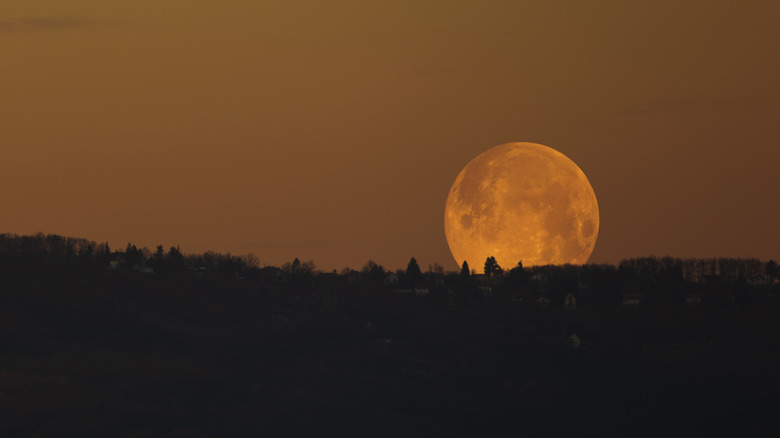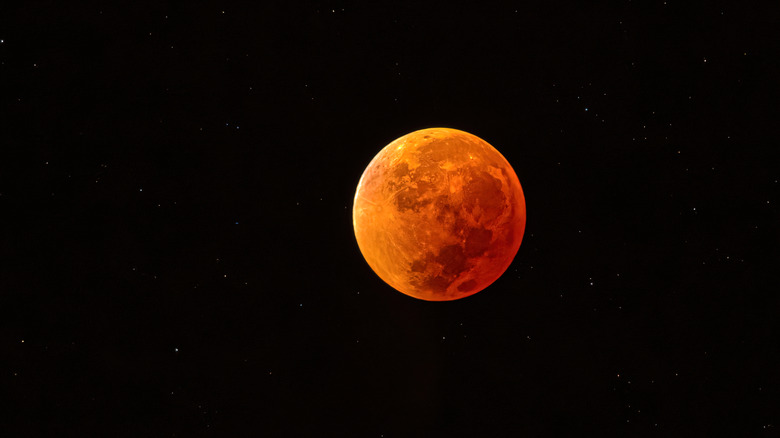Why Does The Moon Look Orange Sometimes?
Unless you're a werewolf, the full moon is always a beautiful sight. Only when the sphere of the moon (or more accurately, a spheroid) facing Earth is illuminated can you see all the scars and craters that tell its story. Not all full moons are created equal though. On certain, special nights, you may find that the moon is tinged with a rusty orange hue, as if a giant cosmic jack-o-lantern is suspended above you.
The real color of the moon is gray, but at different times, it appears to change color from our perspective on Earth. When the moon takes on a red or pink hue, we call it a "blood moon," and a yellow or orange moon is often dubbed a "harvest moon." The rare super blue moon, however, isn't actually blue. Of all the unusual shades that the moon can take on, the range of yellow to orange is the most common, and it's often called a harvest moon because it regularly happens around late summer or early autumn.
When you view the moon low on the horizon, you're seeing it through a thicker part of the atmosphere than when it is high in the sky. The denser, lower levels of the atmosphere filter out short wavelengths of light, which correspond to the colors blue and violet. Longer wavelengths of light, in the range of yellow to red, pass through, making the moon look orange-colored. However, this isn't the only way the moon can take on a rusty hue.
Orange moon versus blood moon
Orange moons aren't common, but they aren't exactly rare either. The full moon closest to the autumnal equinox in the Northern Hemisphere is called a harvest moon, and it frequently appears orange because the moon rises at a narrower angle to the horizon that time of year. On top of that, there are typically more dust particles in the air around autumn, many of them spread by crop harvests themselves, which further scatters short wavelengths of light. So, if you are in the Northern Hemisphere around the autumnal equinox, there's a pretty good chance to see an orange moon. But if anyone around you dares to call the sight a "blood moon," you'll have to correct them.
The term "blood moon" actually refers to one of the effects of a lunar eclipse. A total lunar eclipse occurs when Earth's orbit places it directly between the sun and the moon, casting the planet's shadow upon the lunar surface. This has the effect of turning the moon a rusty orange or red color, similar to the color of many harvest moons. There is a harvest moon every year, although it may not necessarily appear orange depending on your location; a blood moon is much rarer, only occurring about once every two and a half years for any given location on Earth. Another way to tell the difference between a blood moon and other instances of an orange moon is that lunar eclipses are predictable, and almost always make the news beforehand.

